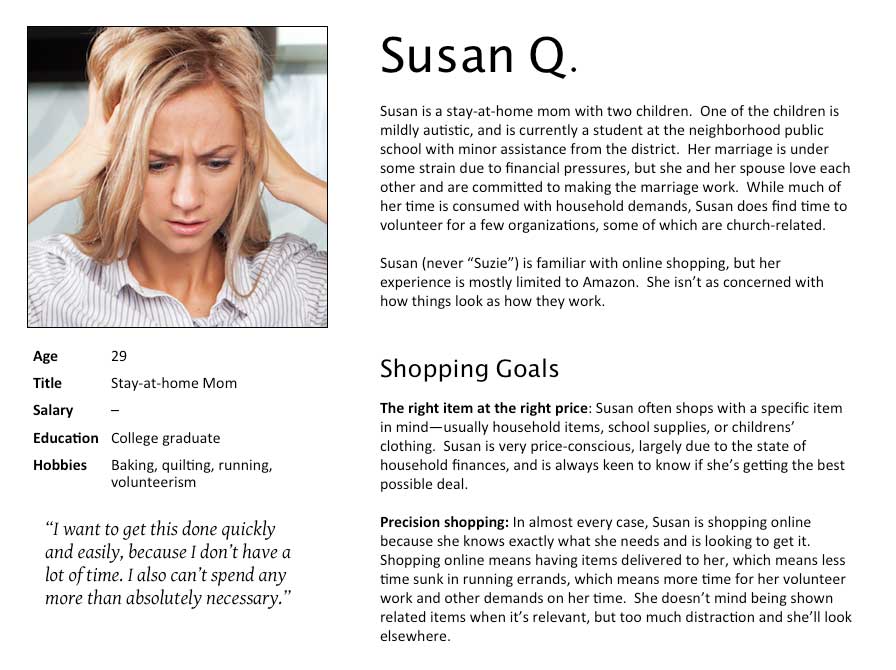
If you’ve done any UX work at all, you’ve probably worked with and created personas.
Personas are fictional, archetypal characters that represent the users of a site or product. Personas can be very useful: they can help us see a design from new perspectives, make decisions, and uncover blind spots.
Sometimes, personas are based on existing user behaviour and your own research. They can also be invented fictions, intended to model the different kinds of users for a completely new design—something for which there aren’t any users yet, and so no existing behaviour to model.
Either way, there’s often a blind spot built into the personas: they’re too perfect. I don’t mean that they’re too well made, but that the characterisation is usually sanitised, representing an idealised state of being.
The mid-30s stay-at-home mother personas never have troubled marriages, difficulty with their kids, or worries about ageing parents—unless those problems are directly relevant to the thing being designed. For a medical-information design, sure, the personas all have medical worries. But the personas for an online retailer almost never do.
Your instinct may be to reject such things as irrelevant. But think about it: our actual users, the ones for whom we’re trying to design these experiences, do have stresses and worries in their lives. After all, they’re human. And those stresses and worries, being part of them, are also a part of their interaction with everything in their lives. If that includes your design, then they will interact and react within the complete context of their messy, human lives.
When our personas fail to include stresses and worries that have little or nothing to do with whatever we’re creating, we’re actually blinding ourselves.
The bright smiles of a thousand cheery stock photos distract us, and the narrowly focused descriptions lead us astray. We’re more likely to think of our personas, and thus our users, as behavioural puzzles to be solved rather than as complete humans.
So as you write your personas and scenarios, don’t drain the life from them: be raw. Bring in snippets of users’ anecdotes if you have them, and include emotion wherever you can. Whoever picks these personas up down the line should feel as compelled to help them as you do.


